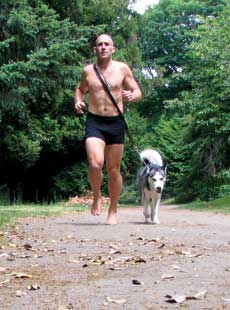What the barefoot fad was really all about


Someday the recent move by Vibram, the manufacturer of the iconic FiveFingers shoe, to settle with consumers for overstating the health benefits of their product may look like a shrewd business decision. If nothing else, it indicates that Vibram has been paying attention. Unlike Reebok, who settled for $25 million with the US Federal Trade Commission in 2011 regarding false claims involving their EasyTone and RunTone shoes, the $3.75 million Vibram is hoping to pay out could be seen as a relative bargain.
Leaving aside the aversion to a litigious culture intent on rewarding gullibility with cash incentives and free shoes, it may be time to revisit the barefoot and minimalist footwear phenomena.
Dave Dame, owner of Peterborough’s Runner’s Life has been in the business 20 years, just long enough to understand that the minimalist shoe movement isn’t anything new. He is neither buying nor selling it.
“The short version is we never bit on the fad. It didn’t make sense. It’s physics. If the shoe isn’t absorbing the shock of impact then your body is. We live in Canada, not the African or Mexican plateau. Our world is covered in concrete. It doesn’t absorb shock. It’s also frozen half the year,” says Dame.
“We are fans of science,” continues Dame, “and the evidence in favour was all testimonials. Our own data pointed to trouble. We had some runners in our group try them and we had a 100 per cent injury rate. Not just the Vibrams but any sort of barefoot running shoe always resulted in injury, 100 per cent of the time.”
While Dame wasn’t selling these shoes, and in the process, forfeiting a great deal of money, he developed a theory. “These shoes,” he says, “weren’t for runners, or at least weren’t for runners who ran three or more days a week.”
Herein lies the divide between serious runners, and those who are starting out by trying sport first. Simply put, runners laying down the serious mileage that is essential to success in the marathon couldn’t afford to dabble in a product that more or less guaranteed injury. Chances are that if you were a Canadian running barefoot you weren’t doing a lot of running and certainly weren’t going very quickly when you were.
But this too misses the point.
Barefoot and minimalist shoes were never about function or the health benefits. They were about an ascetic and, at a deeper level, this movement may have much more to do with Into the Wild’s Chris McCandless than Born to Run’s Chris McDougall.
There’s an argument to be made that would-be minimalist runners were never interested in running in the first place and instead were intent on being iconoclasts. Considering the millions of shoes Vibram sold, and the indelible image of people running barefoot (or close to) while adorned with numerous water bottles and various potions plumbs the depths of absurdity.
What has been missed in the rise and fall of the barefoot movement is that running has always been steeped in a certain kind of wilful austerity that seeks expression in broken down shoes, lucky singlets, ragged shorts and solitude. Run far enough and things start to disappear including body mass, bone density, and in some cases friends and family too. Distance running isn’t merely a sport but for many people an obsession populated by weirdos who willingly choose to spend a great deal of their time alone.
Vibram’s success in the sport, though founded on misrepresentation hasn’t been entirely negative. Serious runners never considered their shoes anything other than a gimmick but the presence of the FiveFinger shoe and variations of it served to pressure the industry in to producing lighter training shoes. This has been good for everyone. On the flip side, Born to Run unquestionably inspired untold numbers of people to try running. Many of them probably bought a pair of toe shoes, ran for a while and then quit. But others no doubt found shoes that worked for them and stuck with it.
It’s a poor carpenter who blames their tools but giving tools undue credit is equally untenable. Choice in footwear, whether it’s running shoes, flats, or, in Emile Zatopek’s case, work boots, is meaningless if the work hasn’t been done.
And even then there are no guarantees.


